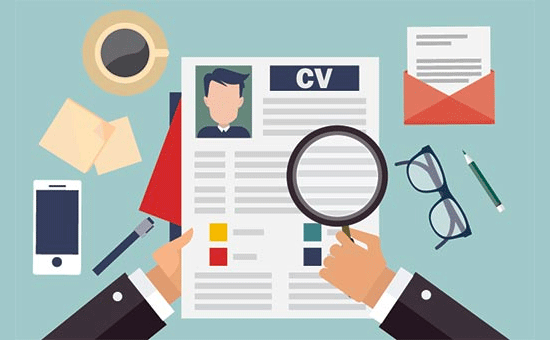How long should a CV be?
A standard CV should not be more than two A4 pages.
To save space, include only the main points of your education and experience. Attach the relevant information and do not repeat what you said in your cover letter.
As a recent graduate, your CV can only take one page and this is highly acceptable. Some medical or academic CVs may be longer depending on your experience.
What should you include in a CV?
- Contact Details – Include your full name, home address, telephone number, and email address. If you are not applying for an acting or modeling job, you do not need to include your date of birth or a photograph.
- Profile – A CV profile is a summary statement that highlights your key attributes and helps you distinguish between other CVs. Usually placed at the beginning of the CV selects some relevant achievements and skills while expressing your career goals. A good CV profile focuses on the sector where you are applying, as your cover letter will be job specific. Keep personal CV statements short and to the point – 100 words is the perfect length.
- Education – List and date all previous education, including vocational qualifications. Put the last one first. Include specific modules only when necessary.
- Work Experiences – List your work experience in reverse order, making sure everything you mention is relevant to the job you are applying for. If you have enough significant work experience, this part should come before education.
- Skills and achievements – here you are talking about the foreign languages you speak and the IT packages you can use competently. The key skills you list should be relevant to the job. Do not exaggerate your real skills, as you will have to support your claims in the interview. If you have a lot of job-specific skills, you need to make a skills-based CV.
- Interests – Your personal hobby will not attract the attention of recruiters unless it relates to your skills and application. However, relevant interests can give you a better idea of who you are and give you something to talk about during the interview. Examples include writing your own blog if you want to be a journalist, or be part of a dramatic group if you are looking to get into sales.
- References – You do not need to say “on-demand references” as most employers will assume this will happen.
CV format
- Avoid frequently used fonts. Choose something professional, clear and easy to read such as “Arial” or “Times New Roman”. Use a font size between 10 and 12 to make sure potential employers read your CV. Make sure all fonts and font sizes are consistent throughout your CV.
- Section titles are a good way to spread your CV. Make sure they stand making them larger (font size 14 or 16) and bold.
- Sort everything in reverse chronological order so that the recruiter first looks at your work history and recent accomplishments.
- Keep it concise using clear space and bullet points. This type of CV submission allows potential employers to better understand your CV and quickly select important information first.
- If you are posting your CV, print it on white A4 paper. Print only on one side and do not fold the CV – do not want it to be wrinkled.
How to write a good CV
- A good CV does not have any spelling or grammatical errors. Use a spell checker and record a second pair of eyes to check the document.
- Avoid general phrases and terms, excessive as “team worker”, “worker” and “multitasker”. Rather, give real-life examples that demonstrate all of these skills.
- Create the right type of CV for your circumstances. Decide if a chronological, skill-based or academic CV is right for you.
- Do not put the term ‘curriculum vitae’ at the top of the page.
- Make sure your email address sounds professional. If your personal address is inappropriate, create a new account for the profession.

